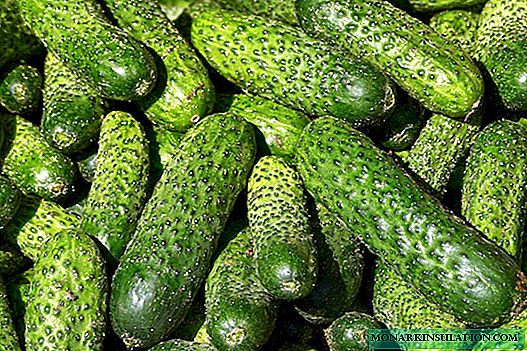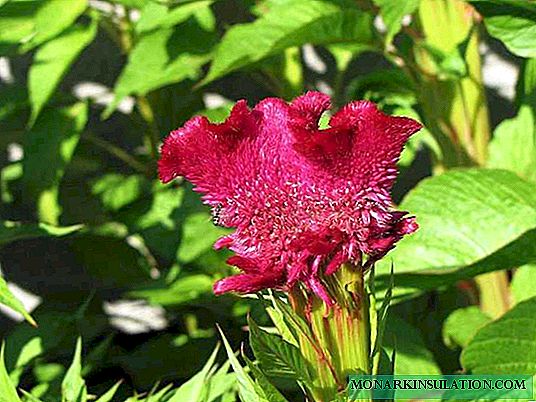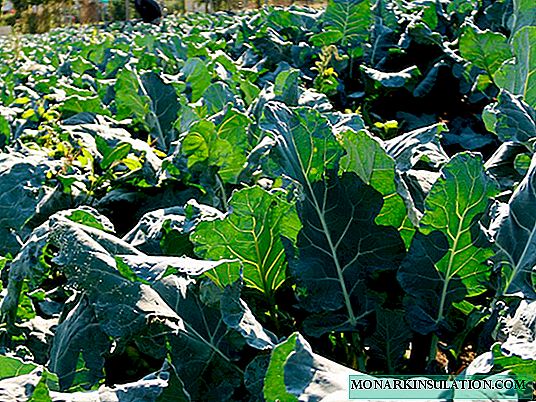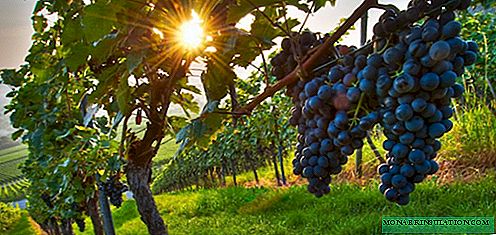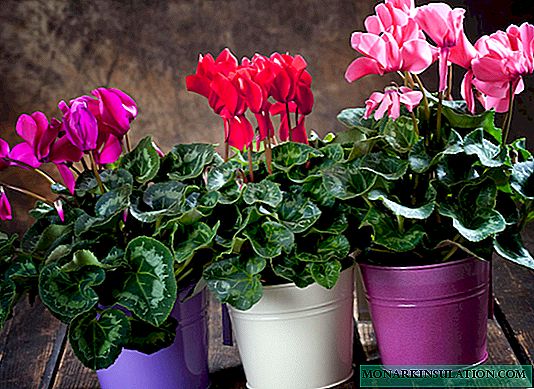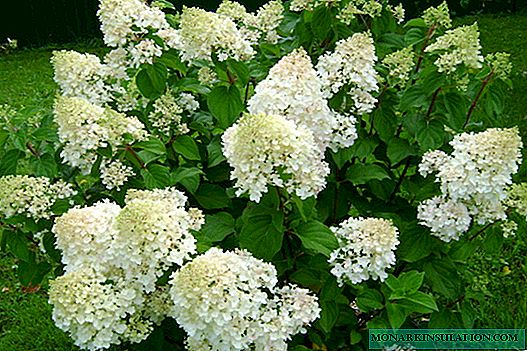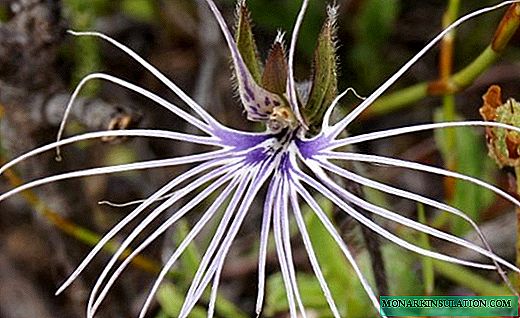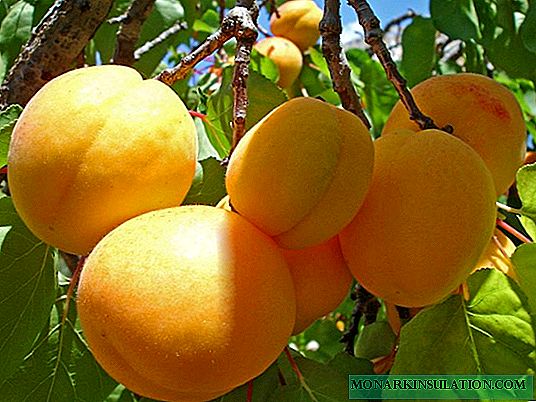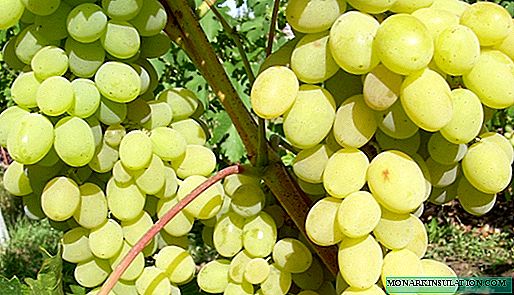
Since ancient times, viticulture has been distributed in warm regions. Today, grape planting can be found even in the northernmost regions. The choice among a huge variety of varieties sometimes baffles even experienced gardeners, because the trials of each selection achievement take more than one year. There are varieties of unpretentious care, easy to breed, stably pleasing harvest. Augustine is such a variety: it is grown for personal consumption, for commercial purposes and for decorating the garden.
History of Augustine Grapes
Augustine grapes are actually a hybrid bred in Bulgaria by crossing Pleven and Villar Blanc. Pleven transmitted resistance to rot and fungal diseases, and Villard Blanc - resistance to weather. Despite its southern origin, Augustine grows well in Siberia and the Urals.
Photo gallery: "parents" of Augustin variety
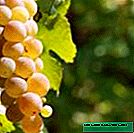
- Variety Pleven tolerates transportation and frost
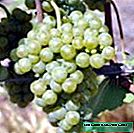
- Villard Blanc was bred in France

- Augustine combines the best qualities of two varieties
Grade description
Augustine is a table grape variety with an early ripening period - only 117 days. Already in the middle or end of August, the first fruits ripen, which without loss of quality can remain on the bush for up to two weeks. The weight of one cluster is 400 g; the clusters themselves are loose, conical in shape. The berries are elongated-oval, weighing up to 5 g. The taste of grapes is simple, but sweet, marmalade even in rainy summers. The color of the berries is white with an amber hue, in the sun the bunch is elegantly glowing from the inside. The dense skin protects well from wasps and other insects, but it is not felt during eating.

Augustine's bunches of conical shape, weigh about 400 g
Other names of the variety Augustin are V 25/20, Pleven stable, Phenomenon.
The disadvantages of the variety are the presence of rather large seeds and cracking of the fruit after prolonged rains.
Grade characteristics
Augustine grape bushes are strong, highly leafy, so thickened plantings are unacceptable. The variety is quite resistant to fungal diseases, mildew, oidium. Augustine's frost resistance up to -22 °C, therefore, in the northern latitudes it is necessary to shelter it, protecting it from low temperatures.

Despite the frost resistance of the variety, in the northern regions the bushes need to be covered for the winter
The productivity of one bush reaches 50-60 kg, and with industrial cultivation - 120-140 kg / ha. The accumulation of sugar in fruits reaches 17-20%.
The grape flowers are bisexual, pollination is very good regardless of the weather. Augustine can serve as a pollinator for other nearby grape varieties.
Video: Augustin modern grape planting
Augustine grape bush is powerful, with great energy of growth, perfectly braids arches and arbors. Shoots ripen well. The vine is red-brown in color with specks, "freckles." Leaves are rounded, slightly dissected, dark green in color.
The transportability of bunches is high. With overload, aging is delayed for 7-10 days, so normalization is necessary.

When normalizing, a smaller ovary is removed
Features of planting and growing
Augustine is unpretentious in care, undemanding to food and stably harvested. Prefers moisture chernozems or loams. Groundwater stagnation is unacceptable. This variety is grown and propagated in several ways:
- own seedlings;
- grafted cuttings;
- by seeds;
- layering from an adult bush.

A dug shoot can give up to a dozen seedlings
Augustine seedlings are planted in spring and autumn, they take root well, more than 90% of the plantings are successful. But still it is necessary to observe the basic rules for planting grapes:
- Seedlings are chosen with a developed root system, the upper cut should be green.
- A sunny and sheltered from strong winds place is suitable for landing.
- Pits with a depth and width of 0.8 m are prepared two weeks before disembarkation, seasoned with two or three buckets of compost.
- The stem is planted in such a way that the upper eye is above the surface of the soil, a support is driven in nearby. The distance between the sprouts should be at least one and a half meters.

Cuttings need to be planted in a pit prepared in advance
- Young plants do not require special care, they need only regular loosening of the soil and watering.
Further care for Augustine grapes includes regular weeding, loosening, pinching, pruning, removal of excess leaves, and in case of drought, watering. In some cases, it is necessary to normalize the brush so as not to harm the plant.
Reviews
Very plastic grapes. Tolerates a lot ... but still do not overload and leave without shelter.
Andrey Viktorovich, Kuban//www.vinograd7.ru/forum/viewtopic.php?p=344661
I like Augustine. Growing in a greenhouse. Ripens first, ahead of Codrianka. Nice and delicious. It is well pollinated (independently), the vine ripens at the same time as berries. Last year, planted a bush in the exhaust gas.
Alexander, St. Petersburg//vinforum.ru/index.php?topic=43.0
Augustine (aka Pleven, aka Phenomenon) is the grape with which my love for viticulture began. The first bush is already 15 years old (chernozem), it stood in the ice and withstood long rains, and my experiments were amateurish))) But I was always with the crop, the berries were never peeled, and they pleased the eye with one calibrated size. Yes, I’m trying new items, collecting all sorts of GF, but I will never give up Augustine as an old friend.
Sergey, Dneprodzerzhinsk//forum.vinograd.info/showthread.php?p=720888
Augustine is a great variety, especially for beginners. Growth is strong, rooting is excellent, it is very rare. With minimal amounts of effort it gives the maximum return. The tick is practically not damaged, wasps attack only if the fruits are bursting in the rainy year. A bunch is a standard for food, neither large nor small. Little stepsons, frost resistance is good. Variety is a summer resident's dream!






